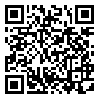Volume 17, Issue 2 (2015)
JAST 2015, 17(2): 345-356 |
Back to browse issues page
1- Department of Poultry Science, Faculty of Agriculture, Tarbiat Modares University, Tehran, Islamic
Republic of Iran.
Abstract: (6072 Views)
Lactobacilli, like the other gut commensal bacteria, are well known for their use in poultry nutrition and for their probiotic properties. However, little is known about their interaction with the gastro-intestinal tract when administered in vivo. To specifically monitor the passage of lactobacilli after administered in hatchery, Lactobacillus plantarum was transformed with the recombinant vector pLEM415::gfp. A total of 200 one-day old chicks (ROSS 308) were assigned to five experimental groups including the control and four in-hatchery probiotic administration method groups comprised of in ovo injection, oral gavage, spray, and vent lip application. At 0, 4, 12, 24, 48, and 72 hours post-probiotic administration, 6 chicks were sacrificed from each group. Adhered bacteria were sampled from intestinal sections. Polymerize chain reaction (PCR) was used to trace the transformed L. plantarum in the alimentary tract of the birds. The GFP transformed bacteria were detected in intestinal samples of oral gavage, spray, and in ovo injection groups; while in vent lip method no GFP transformed bacteria were detectable. Oral gavage method of probiotic administration was the most effective route, which seemed to be the result of direct delivery of the full dose of probiotic microorganisms into the target sites. Based on the results of this trial, administration of probiotic in hatchery had a positive effect on the morphology of the intestine and in ovo injection route, and oral gavage method seemed to be more effective. In this experiment, the utility of transformed probiotic bacteria with GFP was shown to monitor the fate of the probiotics when administered via various routes to poultry.
Received: 2013/04/5 | Accepted: 2014/07/16 | Published: 2015/03/1
| Rights and permissions | |
 |
This work is licensed under a Creative Commons Attribution-NonCommercial 4.0 International License. |


